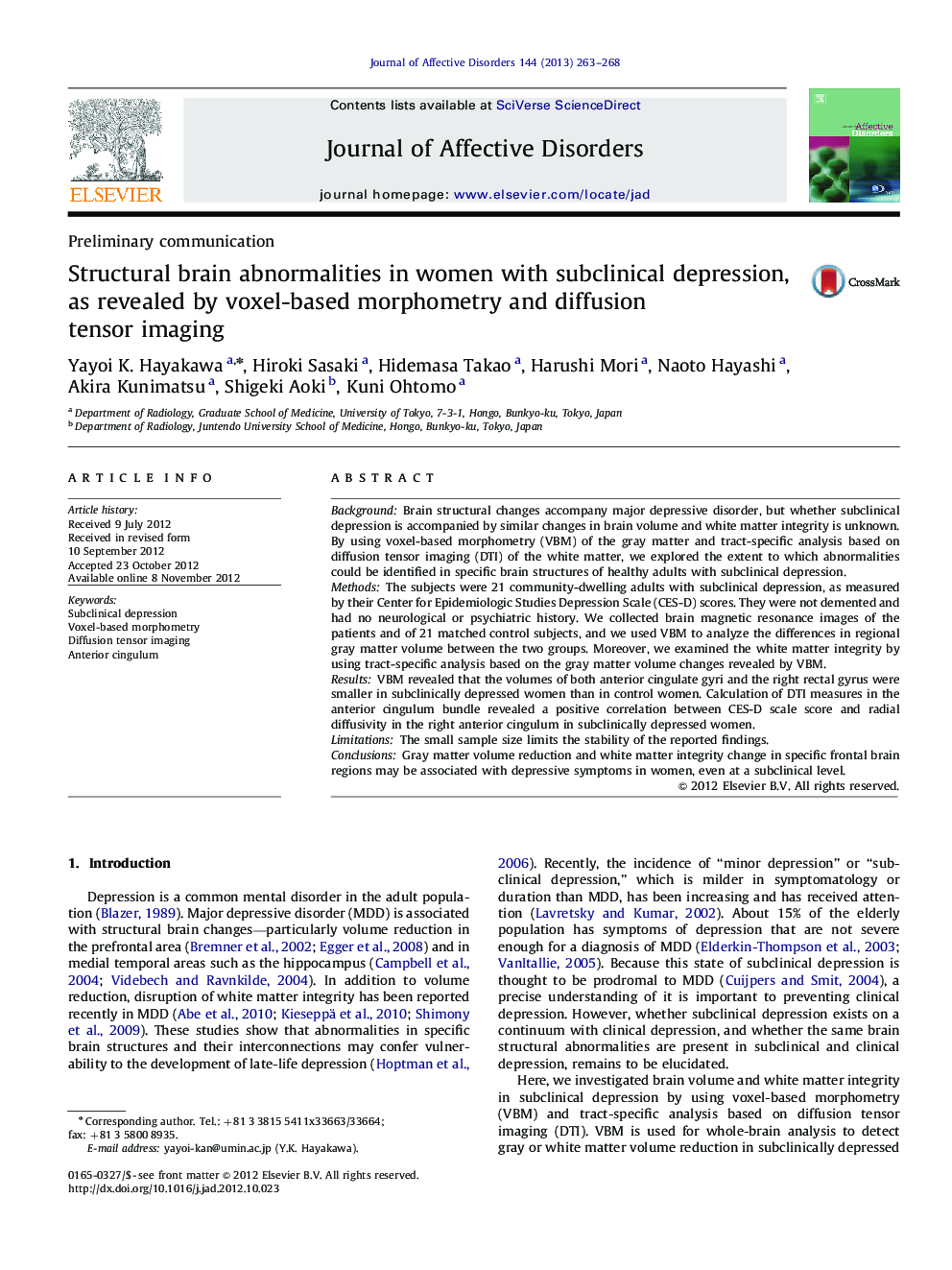| Article ID | Journal | Published Year | Pages | File Type |
|---|---|---|---|---|
| 4186162 | Journal of Affective Disorders | 2013 | 6 Pages |
BackgroundBrain structural changes accompany major depressive disorder, but whether subclinical depression is accompanied by similar changes in brain volume and white matter integrity is unknown. By using voxel-based morphometry (VBM) of the gray matter and tract-specific analysis based on diffusion tensor imaging (DTI) of the white matter, we explored the extent to which abnormalities could be identified in specific brain structures of healthy adults with subclinical depression.MethodsThe subjects were 21 community-dwelling adults with subclinical depression, as measured by their Center for Epidemiologic Studies Depression Scale (CES-D) scores. They were not demented and had no neurological or psychiatric history. We collected brain magnetic resonance images of the patients and of 21 matched control subjects, and we used VBM to analyze the differences in regional gray matter volume between the two groups. Moreover, we examined the white matter integrity by using tract-specific analysis based on the gray matter volume changes revealed by VBM.ResultsVBM revealed that the volumes of both anterior cingulate gyri and the right rectal gyrus were smaller in subclinically depressed women than in control women. Calculation of DTI measures in the anterior cingulum bundle revealed a positive correlation between CES-D scale score and radial diffusivity in the right anterior cingulum in subclinically depressed women.LimitationsThe small sample size limits the stability of the reported findings.ConclusionsGray matter volume reduction and white matter integrity change in specific frontal brain regions may be associated with depressive symptoms in women, even at a subclinical level.
